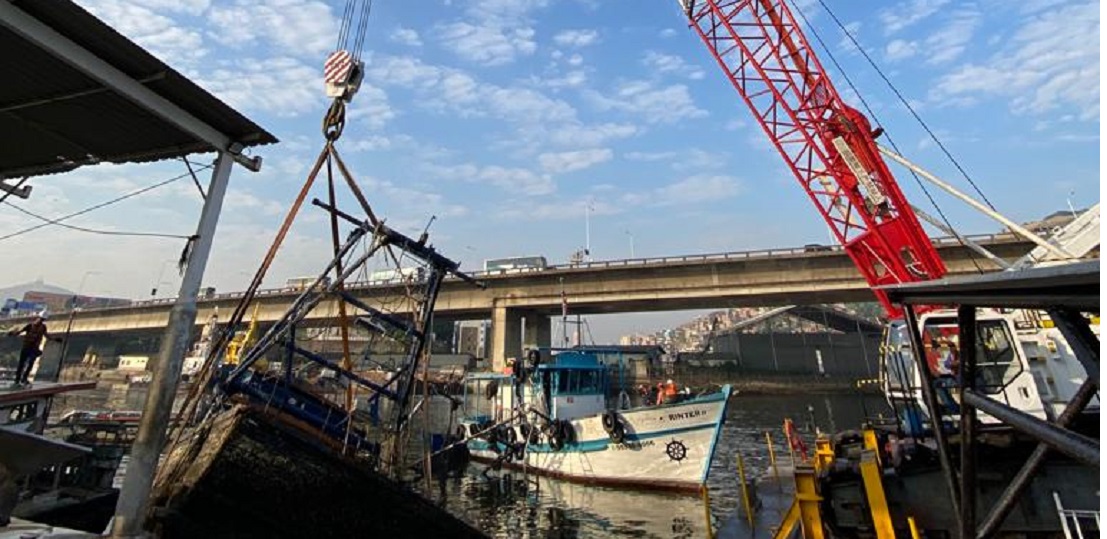
Rio de Janeiro tackles ‘ship graveyard’ situation in Guanabara Bay
Aug, 15, 2023 Posted by Gabriel MalheirosWeek 202334
Ever since the Portuguese explorer Gaspar de Lemos first sailed his caravel and ended up in Guanabara Bay in 1502, its waters witnessed hundreds of vessels sinking. The sheer number of these wrecks has reached a point where they are posing a threat to navigation and becoming a barrier to the arrival of boats at the pier. In response, a joint task force spearheaded by PortosRio, the manager of Rio de Janeiro’s ports, and comprising various State Government entities, has initiated a concerted effort in recent months to extricate abandoned boats and hulks from the bay’s waters.
The endeavor has been guided by a comprehensive report from the Navy’s Port Captaincy, indicating 51 vessels and hulls left forsaken in the bay for a minimum of five years. All these entities have received the maritime authority’s declaration of forfeiture, an imperative prerequisite for their removal. The initial step was taken on May 17, when the extraction of the first vessel, which had been submerged for over a decade, commenced. This intricate process, taking around five days, involves carefully dismantling the wreckage and then directing the salvageable materials to designated sites for potential reuse.
On June 29, the project entered its second phase. This stage saw the collaboration with the City of Niterói as the task force targeted the removal of five stranded boats near Ilha da Conceição, Niterói, in close proximity to a fish unloading pier. These predominantly wooden boats are of medium size, with the largest one measuring 28 meters.
Hugo Leal, the state secretary of Energy and Economy of the Sea, noted, “These vessels make it difficult for fishing boats to access the pier, reducing the mooring area and forcing fishermen to wait longer to be able to dock and unload their boats. In addition, they pose a risk of accidents during maneuvers.”
Pollution
The removal efforts carry the added advantage of tackling pollution in Guanabara Bay. Biologist and ecology expert Mario Moscatelli highlighted, “The primary environmental concern is the potential release of substances like oil, fuel, and other contaminants into the water.”
He also pointed out that numerous instances of oil discharge have occurred in Guanabara Bay, but attributing the exact source of the leaked product remained elusive, thereby impeding punitive actions. “The bay’s environmental oversight has shown inadequacies. The removal of abandoned vessels holds the potential to enhance the situation,” Moscatelli emphasized.
As outlined by Niterói’s Department of Economic Development, all salvaged wooden materials are meticulously cataloged within city-owned premises before being dispatched to a waste treatment center.
Ghost Ships and Hazards
For decades, Guanabara Bay has earned a somber reputation as a floating graveyard replete with unmanned ghost ships. Illustrating this reality, in November of the previous year, an adrift vessel collided with the Rio-Niterói Bridge, compelling a shutdown of traffic in both directions. Due to the local weather conditions, the mooring of the São Luiz ship failed, causing it to drift from its anchorage toward the bridge.
The São Luiz vessel had languished in anchorage for over six years, standing as one among a collection of corroded and barnacle-encrusted boats strewn across the expanse of Guanabara Bay. Devoid of a crew and active propulsion, these vessels of varying sizes pose escalating threats, exacting a toll on fishing activities while also obstructing navigation pathways, as experts have underscored.
Source: A Tribuna
To read the original text, click on: https://www.atribuna.com.br/noticias/portomar/rio-de-janeiro-remove-cemiterio-flutuante-de-navios-na-baia-de-guanabara
-
Ports and Terminals
Dec, 20, 2022
0
Itapoá breaks record for cross docking exports in 2022
-
Grains
Apr, 05, 2023
0
Argentina’s new ‘soy dollar’ plan to run from Saturday to end-May
-
Grains
Apr, 18, 2024
0
Brazil’s soybean oil export values surge to 20-month high
-
Other Cargo
Dec, 22, 2021
0
Brazil to export dairy products to Mexico


